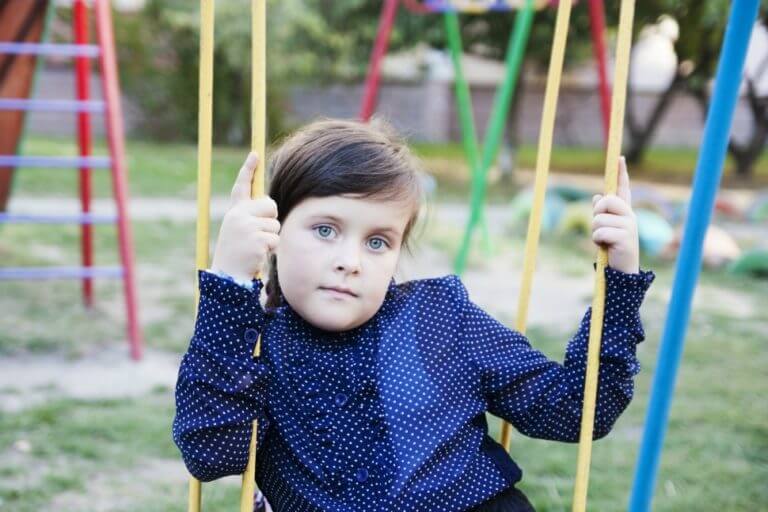Special Needs Family Feature: Cystic Fibrosis
Note: I may earn money or products from the companies, products, or links mentioned in this post.
Growing up, my best friend in the world was Bethany. She was the middle child of a family of 7 children. I got to know her family very well since we all went to school together. When her oldest brother, Josh brought home is girlfriend (now wife), Elizabeth from college, I enjoyed meeting her and talking to her here and there.
After Josh and Elizabeth got married I decided to follow their journey online via Elizabeth’s Facebook. When I heard that both of their children had something called Cystic Fibrosis, I was clueless. What was it and what did it mean? Over the years I have been enjoying their children’s pictures and learning about what CF meant for their little family.
As a special needs mom I have learned there are many different types of special needs. So many families out there may have kids that look normal, but many do not know the struggle that goes on within the home. This blog post is to bring awareness so that the general public can learn more about other special needs families. I hope you enjoy Elizabeth’s story.
My name is Elisabeth. My husband Josh is a physician in training to become an orthopedic surgeon. I have been blessed to be able to stay at home to raise our gifts from God. God has blessed us with two beautiful children. Our oldest, Joshua is five years old. Our youngest, Emma is three years old.
Our little ones look just like any other kids. They seem perfectly healthy. You wouldn’t know anything was wrong with them just by looking at them or listening to them or even by watching them play. They develop completely normally. However, if you ever sit down to eat with us you will see me hand each of my children a handful of pills they must take before they begin to eat. They are taking enzymes to help them break down and absorb their food. Without these enzymes, my little ones would be starving almost constantly and would not be gaining weight as they should.
 Joshua and Emma both have cystic fibrosis. Cystic fibrosis (CF) is a terminal disease. The average life span of a person with CF is 37 years. Although CF affects almost every organ in the body, the two biggest problems a person with CF will face is the effects on their intestines and lungs. CF causes the pancreas to be clogged with thick mucus so that it cannot excrete the necessary enzymes into the intestines to help break down and absorb food. CF also causes the lungs to be filled with thick, sticky mucus. This type of mucus is very hard to cough up and sticks around too long in the lungs leading to airway inflammation and repeated deadly bacterial infections.
Joshua and Emma both have cystic fibrosis. Cystic fibrosis (CF) is a terminal disease. The average life span of a person with CF is 37 years. Although CF affects almost every organ in the body, the two biggest problems a person with CF will face is the effects on their intestines and lungs. CF causes the pancreas to be clogged with thick mucus so that it cannot excrete the necessary enzymes into the intestines to help break down and absorb food. CF also causes the lungs to be filled with thick, sticky mucus. This type of mucus is very hard to cough up and sticks around too long in the lungs leading to airway inflammation and repeated deadly bacterial infections.
CF is genetic and is passed on when two people who are each carriers, or have one copy of the mutated gene, have children. A child of two carriers must inherit one mutated copy from each parent. Each time two carriers for CF have a child, the child has a 25% chance of inheriting both copies from their parents and having CF. Josh has one copy of a mutated gene that causes CF, and I have one copy of a mutated gene that causes CF. Both of our children inherited one copy from each of us, and therefore, have the disease. Here are some things we do each day to prevent symptoms or to alleviate symptoms.
Our Day:
When Joshua and Emma wake up, the first thing they must do is strap on a vest that is attached to tubes which connect to an airway clearance system. What this system does is pulsate air at an extremely rapid rate in order to “shake” Joshua and Emma’s lungs. This helps break up any thick mucus that may be lingering inside their lungs. It makes it easier for Joshua and Emma to cough the mucus up. While they are hooked up to this vest, they are also using a nebulizer to deliver medication to their lungs that opens the airways. This also makes it easier for Joshua and Emma to cough mucus up.
 The next thing they do is prepare for breakfast. Every time Joshua and Emma eat, they must take pills called enzymes. The number of enzymes they must take depends on the number of calories and amount of fat they will be eating. These enzymes go into the intestines so Joshua and Emma can break down the food they are eating. They need this because their pancreas is blocked by mucus and they cannot excrete their own natural enzymes. They also take an antacid each time they eat that helps prevent the acid in their stomachs from eating away the enzymes they are taking by mouth. People with CF also produce too much stomach acid.
The next thing they do is prepare for breakfast. Every time Joshua and Emma eat, they must take pills called enzymes. The number of enzymes they must take depends on the number of calories and amount of fat they will be eating. These enzymes go into the intestines so Joshua and Emma can break down the food they are eating. They need this because their pancreas is blocked by mucus and they cannot excrete their own natural enzymes. They also take an antacid each time they eat that helps prevent the acid in their stomachs from eating away the enzymes they are taking by mouth. People with CF also produce too much stomach acid.
They get to be pretty normal for the rest of the day. We have to be extra careful when we are out and about. I try to not let the kids drink out of water fountains since there could be viruses and bacteria lingering. We wash our hands regularly. A common cold for Joshua and Emma is more difficult to get rid of than it is for the average person. They typically hold on to it longer than normal and there is always the risk that it could settle in their lungs and become a respiratory infection.
Joshua and Emma take a vitamin that has been specially formulated to make the fat soluble vitamins A, D, E, and K water soluble so that they do not become deficient in vitamins. They also take miralax as needed because a side effect of malabsorption of fats is bulky stools that can become stuck. Miralax helps pull extra water in the intestine so that the stool becomes more loose. Finally they take antihistamines to help with allergies year round.
God has helped Joshua and Emma remain extremely healthy compared to a lot of others with CF. Neither of them have grown any bacteria in their throat cultures since Emma was one year old. The kids see a pulmonologist, a nurse, a respiratory therapist, a dietician, and a social worker every time they go to the CF clinic. They go every two months to check their weight, height, stomach, and lungs. They have throat cultures done four times a year to check for bacteria growing in their lungs. They have chest x-rays done twice a year. Once they reach the age of 5, they do pulmonary function tests twice a year. This tests how well the lungs are working. Finally they have six to seven tubes of blood drawn once a year to check for vitamin levels and more. Once they get a little older, they will have screening for diabetes because it is common for people with CF to develop diabetes as well.
The Cystic Fibrosis Foundation has done so much in helping find medications that lengthen and improve the lives of people with CF. Last year a drug was released that goes to the cell surface and repairs the basic defect in the cell in CF. It helps improve lung function in those who are taking it. It also allows people with CF who are taking it to gain weight.
Unfortunately, it only fixes the defect in 4% of the population with CF because it works on a more rare mutation. However, there is a similar drug in research right now that fixes the most common mutation! We are so excited to see this drug come out. We are praying it will be released some time in 2014. We raise money for the Cystic Fibrosis Foundation annually because the government does not fund any research for CF since there are not many people affected by it. There are only 30,000 people in the U.S. who have CF. Ninety cents of every dollar donated to the CFF goes directly to research to find a cure for CF. The link to our donation page is http://www.cff.org/Great_
If you would like further information about CF and how you can help, the best resource is www.cff.org.








My cousin passed away 2 months ago from Cystic Fibrosis, he was 26 years old. His brother has it as well, it just breaks my heart that there is so much suffering from this.
I’ve always wanted to know more about CF. My best friend Ashlee was born with it, but it miraculously went away when she was an infant. There’s still nobody that can explain it.
This is a great article. I think that parents with children who are newly diagnosed could benefit from knowing what a typical day would look like in their own home with a child with CF. I will be using it to help introduce CF to staff and families. Thank you for your story!